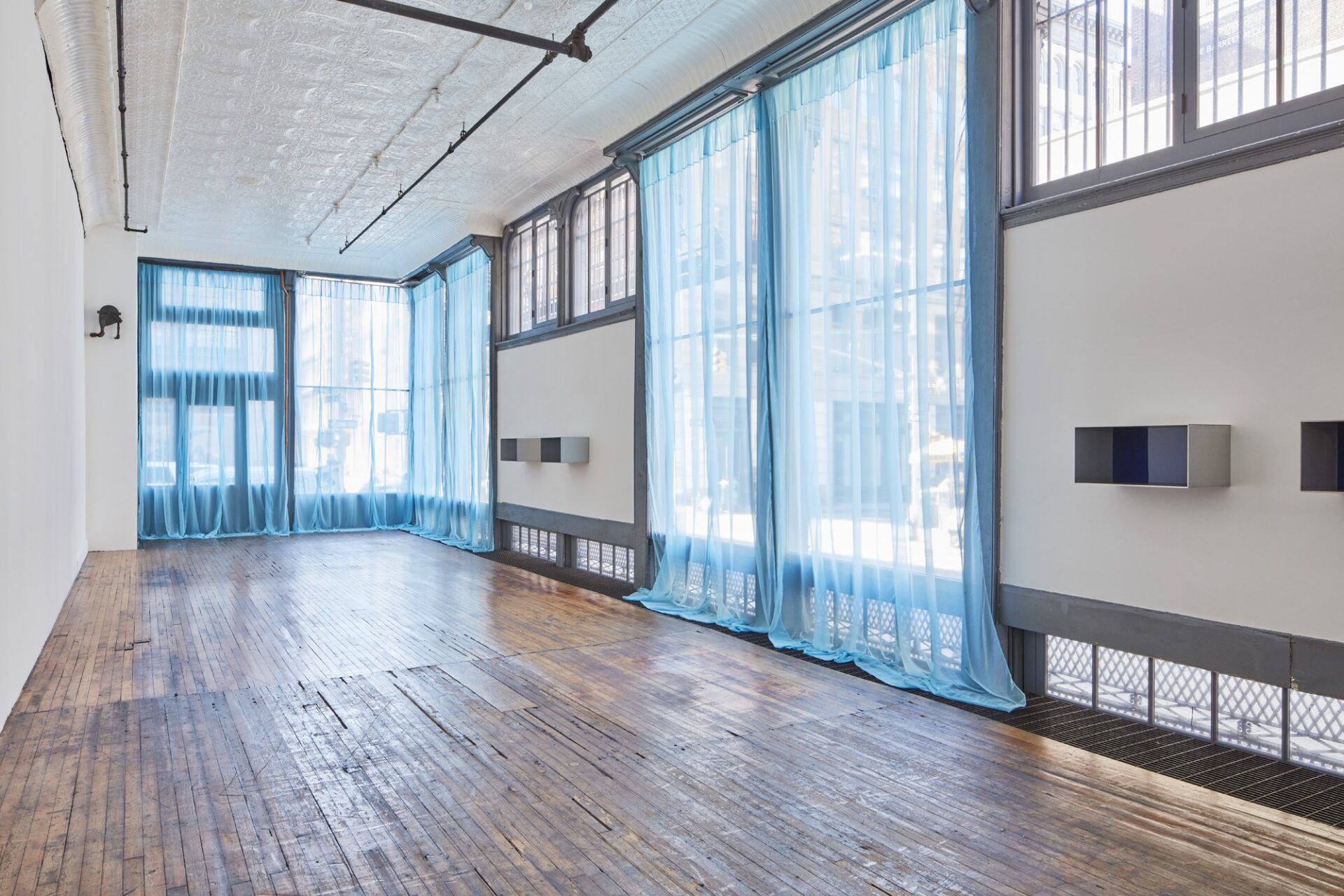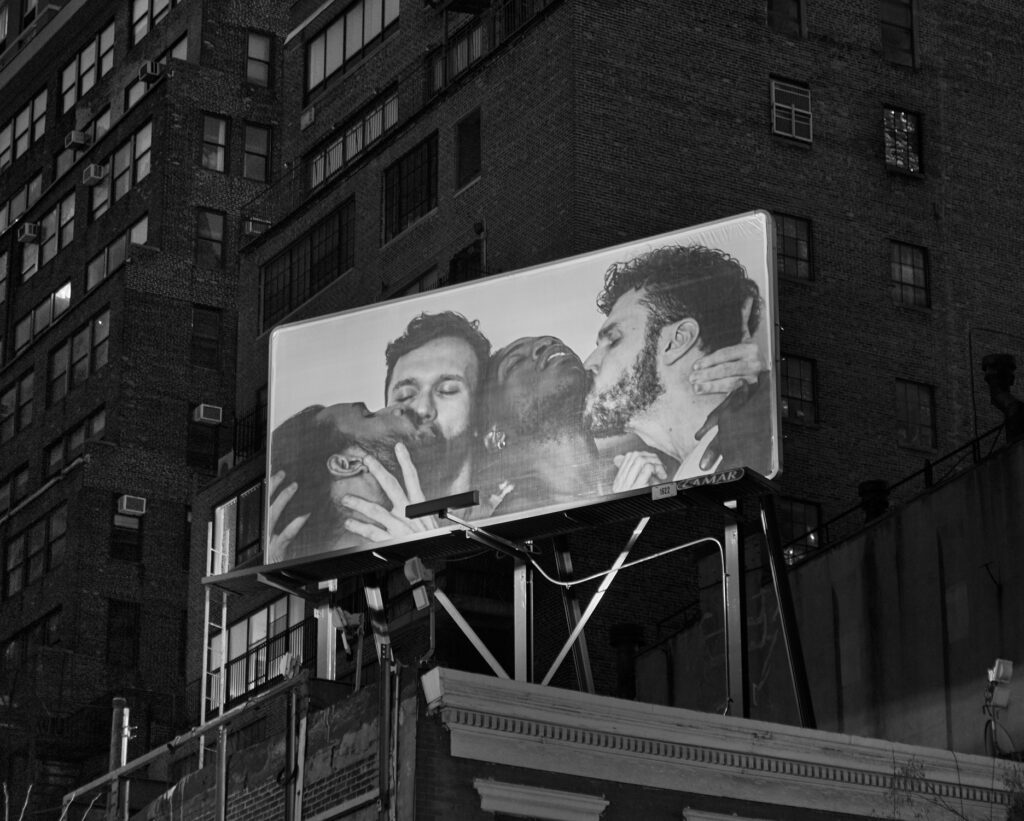inbetweenness
October 22, 2021–January 22, 2022
101 Spring Street
New York, NY

inbetweenness
October 22, 2021–January 22, 2022
101 Spring Street
New York, NY

Judd Foundation presents inbetweenness, an exhibition of works by Felix Gonzalez-Torres, on the ground floor of 101 Spring Street in New York. The exhibition comprises “Untitled” (Loverboy) (1989) and “Untitled” (1991-1993), works that engage the distinctions between art and architecture, the public and the private, and specificity and indeterminacy.
Curated by Flavin Judd, the works were selected with consideration to how they would respond to the architecture of 101 Spring Street. “I am interested in the way Felix Gonzalez-Torres infused meaning into objects,” Judd notes. “The exhibition allows for the viewer to see how these two works deal with space: neither of them are on the floor; you are in them, and to some extent not walking around them but walking along them. The primary interest was in matching the works to the space and letting them both interact.”
The exhibition is accompanied by a newsprint publication edited by Flavin Judd and Caitlin Murray that includes newly commissioned texts by Josh T Franco, Raquel Gutiérrez, Grant Leuning, Caitlin Murray, and Eileen Myles.
Though the materiality of “Untitled” (Loverboy) and “Untitled” are carefully defined, their dimensions and relationships to the built environment vary, yielding new conditions and interpretations each time they are installed. The particular qualities of the light blue sheer curtains that make up “Untitled” (Loverboy)—“a color you might want to wake up to,” writes Myles of their hue—are activated differently in this space than in any other. The brushing past of a body, a rush of breeze from an open door, or the forced air of a heating and cooling system affects its movement. “A curtain,” Leuning writes, “lifts off the flat glass and rests back against it with the elegance of a dancer’s trailing leg.”
“Untitled” engages purposeful contradictions. It is a billboard, yet in this manifestation it is installed within 101 Spring Street, a former domestic space, now public. The outside depicted on the billboard—a sky with two birds—moves inside. The sky becomes architectural, forming a dark corner. The viewer might wonder how to make sense of these contradictions. Or perhaps is it not sense-making but sensuality that the work is addressing. In the context of this coauthoring of meaning, Gutiérrez asks, “What is it that we give back to the work or the artist in return?”
inbetweenness is part of Judd Foundation’s ongoing exhibition series. Since 2015, Judd Foundation has organized exhibitions of works by Alvar Aalto, John Chamberlain, Dan Flavin, Donald Judd, Yayoi Kusama, Richard Long, James Rosenquist, and Lauretta Vinciarelli. Held on the ground floor of 101 Spring Street, these exhibitions continue a practice begun by Judd of using the ground floor as a public exhibition space. During his lifetime, Judd organized exhibitions at 101 Spring Street of the work of Richard Paul Lohse, Meg Webster, Yun Hyong-keun, and multiple group exhibitions to benefit the War Resisters League.
Felix Gonzalez-Torres (b. Cuba, 1957; d. USA, 1996) is one of the most significant American artists to emerge in the late 1980s and early 1990s. Living and working in New York City between 1979 and 1995, he studied photography at the Pratt Institute, received an MFA from the International Center for Photography, and twice participated in the Whitney Museum of American Art Independent Study Program.
Solo exhibitions of Gonzalez-Torres’s work include his first institutional exhibition at the New Museum of Contemporary Art, New York (1988); a series of exhibitions at Andrea Rosen Gallery, New York, including Every Week There is Something Different (1991); a retrospective organized by the Solomon R. Guggenheim Museum, New York, which traveled to the Centro Galego de Arte Contemporánea, Santiago de Compostela, and the Musée d’Art Moderne de la Ville de Paris (1995–96); his posthumous representation of the United States at the Venice Biennale, Felix Gonzalez-Torres: America (2007); Felix Gonzalez-Torres: Specific Objects without Specific Form, at Wiels, Brussels; Fondation Beyeler, Basel; and the Museum für Moderne Kunst, Frankfurt (2010–11); and Felix Gonzalez-Torres: The Politics of Relation, the Museu d’Art Contemporani de Barcelona, 2021.
Gonzalez-Torres’s work has been shown in many group exhibitions, including early presentations at Artists Space (1987), White Columns (1988), and the Whitney Biennial (1991), New York; the Venice Biennale (1993); and numerous exhibitions at institutions including the Museum of Modern Art and the Whitney Museum of American Art, New York; the Art Institute of Chicago; Glenstone, Potomac, Maryland; the San Francisco Museum of Modern Art; and Tate, London all of which have significant holdings of Gonzalez-Torres’s work. Distinct from what he considered to be his own practice, from 1987 to 1991 Gonzalez-Torres was part of Group Material, a New York–based art collective whose members worked collaboratively to initiate community education and cultural activism. Gonzalez-Torres died in Miami in January 1996 from AIDS-related causes.
A newsprint publication edited by Flavin Judd and Caitlin Murray with newly commissioned texts by Josh T Franco, Raquel Gutiérrez, Grant Leuning, Caitlin Murray, and Eileen Myles.

“Untitled”
1991-1993
Billboard
Dimensions vary with installation
Two parts